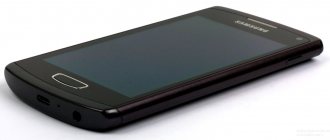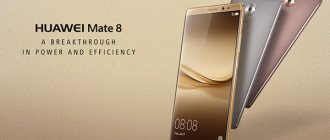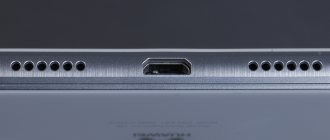Honor is the best-selling smartphone brand in Russia in the first half of 2020. Huawei's subsidiary owes this popularity primarily to budget smartphones, but they also love it for its affordable flagships, which provide users with top-end specs and a good camera for reasonable money.
This year, the Chinese decided to outdo themselves and released Honor 20 Pro, a review of which is brought to your attention. This is undoubtedly the coolest smartphone in the entire history of the brand. But what did the manufacturer sacrifice for an advanced camera? Let's figure it out.
Characteristics of Honor 20 Pro:
- Screen: IPS, 6.26″, FHD+ (2340×1080 px, 412 ppi), 19.5:9;
- Processor: Kirin 980 (7 nm, 4 Cortex-A55 1.8 GHz cores × 2 Cortex-A76 1.92 GHz cores × 2 Cortex-A76 2.6 GHz cores), Mali-G76MP10 graphics (720 MHz, GPU Turbo 3.0);
- Permanent memory: 256 GB (UFS 2.1), without MicroSD support;
- RAM: 8 GB (LPDDR4X, 2133 MHz);
- Main camera: 48 MP (Sony IMX586, f/1.4, EGF 28 mm, OIS) + 16 MP (f/2.2, wide-angle, viewing angle 117 degrees, EGF 13 mm) + 8 MP (3x zoom, f/2.4, EGF 80 mm, OIS) + 2 MP (macro, f/2.4, EGF 27 mm), 4K/30fps video recording;
- Front camera: 32 MP (f/2.0, EGF 26 mm), portrait mode, 1080p/30fps;
- Battery: 4000 mAh (Li-Pol) fast charging 22.5 W;
- SIM: 2 x Nano-SIM;
- Communications: NFC, 4G, Bluetooth 5.0 (aptX HD), Wi-Fi 5 dual-band (802.11ac), SAR 1.08 W/kg;
- Connectors: USB Type-C (OTG);
- Security: fingerprint scanner, Face Unlock;
- OS: Android 9 Pie with EMUI 9.1 shell (Magic UI 2.1);
- Dimensions: 154.6 x 73.97 x 8.44 mm, weight 182 g;
- Colors: Phantom Blue, Phantom Black, Icelandic Illusion.
The presentation of Honor 20 Pro took place on May 21 in London, but a few days before that, the United States imposed sanctions on Huawei, as a result of which the release of the new product was in jeopardy - the flagship was not certified by Google. Fortunately, the issue was resolved and everything ended well. The device debuted in Russia on July 25, and on August 2, Honor 20 Pro went on sale.
Interesting fact: the official price of Honor 20 Pro in Russia is 10 thousand rubles lower than in Europe: 34,990 rubles versus 599 euros (~ 43.7 thousand). It’s better not to order a smartphone on Aliexpress; Chinese versions do not support LTE Band 7 and 20.
The delivery set is absolutely standard: a smartphone, a USB-C cable, a 22.5 W fast charging unit, a clip for the SIM tray, a warranty card and a user manual. The nice thing is that the protective film was applied directly from the factory. The sad thing is the lack of a case and an adapter from USB-C to a 3.5 mm jack, as an unobtrusive warning that there is no mini-jack in the smartphone.
Cameras and photo capabilities
Now let's move on to the most epic part: the cameras, of which there are as many as 5 pieces per carcass! In fact, the manufacturer got confused and decided to make a pocket kit for amateur photographers for a wide variety of scenarios: capturing nature and architecture, capturing a steep street from an ambush, making portraits with good bokeh, photographing pistils and stamens, getting cool shots of a city at night without a tripod...
So, an outstanding (in every sense) main block of three sensors: on top there is a 16-MP wide (f/2.2) at 117° (in fact, it completely covers the natural viewing angle of a person), in the middle there is a main 48-MP module from Sony with an unprecedented even for camera phone with f/1.4 and 4-axis optical stabilization, below an 8-megapixel telephoto with 3x optical zoom and f/2.4 aperture. Below it you can see the black eye of the laser autofocus. The flash and 2-megapixel macro lens (f/2.4) are located slightly to the side and recessed into the body.
The difference between the PRO version and the regular “Twenty” is the presence of not only a 4th sensor, but also dual optical stabilization along 4 axes, which allows you to achieve a sharp picture in the most difficult conditions. In addition, the installed ToF sensor allows you to take 3D portraits. Not the most necessary feature, but just so you know.
Main camera interface
Interface: from wide to 30x zoom
The standard image resolution is 12 MP ; to get a more detailed image at 48 MP (and there is a separate category “48 MP - Ultra-clear with AI”), you will have to go into the settings separately. RAW format is also available if you shoot in professional mode.
Thanks to the presence of a telephoto lens, the device provides 3x magnification without loss of quality, and is generally capable of 30x zoom. Of course, the image is incredibly noisy, but using a smartphone as binoculars is quite convenient.
Photo examples: from 117° to 30x zoom
Night mode pleases with its simplicity and accessibility: you don’t need a tripod, the AI itself will assemble a cool, detailed image (maximum of 16 shots). Photographing fireworks is perfect. At the same time, the night mode can make the zoomed frame clearer and more detailed.
The HONOR 20 PRO has a separate “Aperture” mode, which is great for subject photography with maximum bokeh.
Portrait mode is not overloaded with meticulous appearance settings: you can only specify the general level of anti-aliasing. AI carefully and accurately separates the figure from the background, creating a nice blur where it's really needed.
Examples of photos in various lighting conditions
Examples of portrait photos
Macro photo examples
The camera shoots 4K video at 30 FPS. You can only get to 60 in FHD; stabilization is also included in the same resolution. There is a time-lapse and a somewhat tricky slow-motion effect in the arsenal, with which it is difficult to guess what exact moment will fall into a spectacular slow-mo.
Video cutting
The front camera, which is originally located in the left corner of the display and allows you to develop creativity in the selection of wallpaper, has received a serious resolution of 32 MP and a fairly fast lens with an aperture value of f/2.0 .
Artificial intelligence works very carefully with selfies, without going overboard with enhancements and carefully blurring the background. The main thing is not to try to scatter the pictures too much, otherwise they will crumble into pixels.
If you rummage through the settings, you will find 3D emoji and a set of augmented reality effects, so you can make yourself and videos with some cute ears for fun without third-party applications. The front camera also makes GIFs and 10-second AR videos, and also shoots video at 720p (30 fps), and adequately records sound.
Front camera interface
Examples of selfie photos
Having earned 111 points in the DxOMark , HONOR 20 PRO is literally hot on the heels of Huawei’s older photo flagships. Our hero has an unprecedented f/1.4 aperture, but a weaker hybrid zoom. The P30 Pro already has 5x magnification, more subtle adjustment nuances (including the choice of film, which is not available in Honor, a wider selection of filters) and those same magic lenses from Leica that give special crystal clarity to the image. In a direct comparison, we find that our 20 PRO is obviously distorted into magenta, which can be corrected already at the post-processing stage. Filling images in Lightroom demonstrates that the top-end HONOR compresses the images quite heavily: when enlarged, outright pixel smudges appear. But on the smartphone screen everything looks juicy, bright and cool. More than enough for Instagram.
A separate macro sensor, which focuses already at a distance of 4 cm, is purely subjective; it seems to be needed more for quantity and show-off: a resolution of 2 MP means working only in good lighting. It’s easier to buy a special removable one for the main sensor or even simply sprinkle it.
Design and ergonomics
Honor 20 Pro, in my opinion, is one of the most beautiful Huawei smartphones in 2020. It is notable for its unusual colors with an interesting holographic 3D effect. The back of the smartphone is made of three layers of tempered glass at once - a regular, colored layer and the so-called depth layer. The purpose of the first two is obvious, but the latter consists of a huge number of tiny prisms, upon which light is scattered and illuminates neighboring pigments, thereby creating a three-dimensional effect. It looks really beautiful, but at the same time restrained, unlike the flashy gradients of most class=”aligncenter” width=”700″ height=”500″[/img]
Unlike the younger version with a flat back, the back cover here is noticeably curved at the edges. Due to this, the phone fits very comfortably in the hand, but the glass remains just as slippery and easily soiled.
The main camera lenses of all the latest Huawei smartphones are emphatically large, but the Honor 20 Pro has protruding optics for the purpose - there is optical stabilization on two modules at once. This is not particularly practical to use; on the table, the device wobbles noticeably when you tap on the screen. If this is a problem for you, buy a case that will cover the camera protrusion.
Against the backdrop of the dominance of similar devices, Honor 20 Pro managed to maintain recognition from the front. The cutout for the front camera on the left is a unique feature of Huawei; only Samsung flagships have this, but their camera island is located on the right side of the screen. Such cutouts are in no hurry to appear in more budget devices, so the device will look premium for a long time.
The bottom frame is slightly thicker than the symmetrical margins on top and sides of the screen, but this does not spoil the “frameless” feeling - the difference is insignificant. In the speaker grille above the screen there is a color notification indicator, which is clearly visible only if you look at the phone perpendicularly; if it is lying on the table in front of you, there may be problems with the visibility of the LED.
The connectors and buttons are arranged in a typical manner: at the bottom there is a USB Type-C port, a speaker and a microphone, at the top there is a second microphone and a proximity sensor. On the right are the volume and power keys, and on the left is the card tray, which, alas, does not support MicroSD.
At the top end, in an oval window, there is a proximity sensor, and not an IR port, which is erroneously indicated in some reviews. You cannot use a smartphone instead of a remote control, as was the case with Honor 10. The sensor itself works correctly.
But with the fingerprint scanner everything is much more interesting; it is located on the right side, directly in the power button of the smartphone. There are no complaints about the quality of the fingerprint sensor: it is very fast and accurate, it works almost instantly, and it is not necessary to press a key, a simple touch is enough.
But this location of the scanner cannot be called an unconditional advantage - it is convenient, since your finger immediately hits the button when you take the phone in your hand. But this solution is only suitable for right-handed people, and if the phone is lying on the table, you need to lift it to unlock it, since Huawei smartphones traditionally do not support turning on the screen by double tap. In addition, the scanner does not recognize gestures - viewing the notification shade and flipping through photos will not work.
By modern standards, the Honor 20 Pro has standard dimensions; the smartphone cannot be called a shovel, but it is also problematic to operate it with one hand; it is inconvenient to reach the top of the screen. Of course, the case could be thinner - here it is almost 8.5 mm, but then a capacious battery would not fit inside, so the dimensions are quite justified
Ergonomics and design
The design of this year's top-end HONOR is almost identical to its younger brother HONOR 20, except that it is distinguished by its streamlined edges. A smartphone with a screen diagonal of 6.26 inches clearly does not pretend to be compact: it is a rather large and weighty (182 g) carcass, which, nevertheless, thanks to the newfangled aspect ratio of 2 to 1 (almost) and softly rounded corners, does not resemble a brick and fits comfortably even in a small woman’s hand.
It looks like the HONOR brand has carved out a monopoly on the exotic side cutout for the front camera. By the way, 20 PRO boasts the world's first IPS screen of this design. In the basic set of wallpapers, the integrated photosensor with a diameter of 4.5 mm effectively disguises the version with a parrot, but one’s hands are itching to find more pictures in order to play up the feature in an original way. An LED sensor suddenly appears under the earpiece grille.
Full HD+ resolution (2340×1080) and a pixel density of 412 PPI is decent, but does not evoke any wow emotions: responsive, bright enough to work in the sun, the colors do not lie, but the contrast is a little lacking.
The powerful block of main cameras looks monumental and protrudes strongly, which is why the phone wobbles noticeably when lying on a horizontal surface. And this is not very convenient. In order to somehow mitigate the discomfort, you will have to find a very thick case: by the way, they didn’t even include a simple silicone one in the basic set...
However, the glass on the back panel turned out to be quite scratch-resistant even without it, and it would be a pity to hide effect of “dynamic holography” Radiant shimmer occurs due to the fact that light passes through 3 layers: glass on top, then a color layer, and a layer below for the effect of depth. The device is available in 2 colors with the poetic names “Shimmering black-violet” and “Shimmering turquoise”. Delicate girlish colors were not developed this time. But, perhaps, they’ll give you a lift later: I just recently received the HONOR 20 in frosty white color!
GIF animation, available by clicking
The top-end HONOR creatively played with the location of the fingerprint sensor, combining it with an on/off button. The sensor responds really lightning fast, and it fits perfectly under the thumb. If you're right-handed, of course. Lefties will have to awkwardly reach with their index finger.
Let's hope that facial recognition will help them out in most cases. Although, as is most often the case, it does not work in the dark.
GIF animation, available by clicking
The audio jack, which appears and disappears in the devices of the Chinese manufacturer, is deliberately ignored in this model: they say that the target audience prefers a wireless headset. As a conciliatory gesture to dissatisfied audiophiles, they included a Type-C to 3.5 mm adapter for headphones. But the headphones themselves are not included in the package. But you can grab them as a free gift for pre-order (until August 1).
The developers clearly expect that the device will be used as a player, so they equipped it with Virtual 9.1 Surround Sound : AI algorithms get rid of distortion and noise for comfortable listening. But the smartphone does not have stereo speakers: the volume is average; if necessary, you should disconnect the wireless speaker. Fortunately, now every second person has them.
Display
Honor 20 Pro is one of the few flagships that uses an IPS screen. The display occupies 91.7% of the front panel area, the hole for the front camera is even smaller than in the Galaxy S10. The very location of the hole on the left is also less striking than that of the Koreans. When you hold the smartphone horizontally, for example during a game, it does not loom, but is covered with your thumb.
The screen itself is represented by a 6.26-inch matrix with FullHD+ resolution and a pixel density of 412 ppi. It has a fairly high brightness - up to 480 cd/m², the automatic adjustment function works correctly. When using it, the brightness of the display in the sun can increase above the maximum level, which can be set manually. In general, there are no questions about the readability of the display.
Everything is also excellent in terms of color rendering. This is a good IPS panel with natural but rich colors, a good level of contrast and viewing angles. By default, the screen is a little cold, but the white balance can be manually adjusted in the settings, and there are two color profiles to choose from (normal and bright).
EMUI offers the ability to reduce the resolution from FHD+ to HD+, which is presented as a tool for improving the autonomy of the smartphone, but in fact there is no particular effect from the function. There is a night mode that raises the color temperature of the screen, making it less irritating to the eyes at night. The settings even hide the notch, but then the screen will become very asymmetrical, with a large top frame, it looks frankly so-so.
Performance and OS
Honor 20 Pro received a top-end processor of Huawei's own production - Kirin 980, which is based on the latest 7 nm process technology. They didn’t save on memory either; there is even more of it than competitors of similar prices: 8 GB of RAM and 256 GB of ROM. With such a volume, it is unlikely that anyone will be affected by the problem of the lack of a slot for MicroSD cards.
Although the smartphone is kept in AnTuTu at the level of last year’s flagships with Snapdragon 845, its performance is absolutely enough for absolutely any task. It is worth giving credit to Huawei for the high-quality optimization of the system; the interface here works simply with lightning speed - there are no crashes, no crashes, no brakes.
The Honor 20 Pro handles all games with ease, PUBG runs at maximum graphics settings, and any popular titles too. After 30 minutes of play, the case warms up to 43 degrees, throttling does not affect the frame rate, the picture remains smooth even during long-term gaming.
The operating system is Android 9 Pie with Magic UI 2.1 shell. Essentially, this is a complete copy of EMUI 9.1 from smartphones under the Huawei brand. The firmware is known for its controversial design, but good functionality and customization options. In the coming months, an update to EMUI 10 is expected, the visual part of which the Chinese have significantly redesigned for the better.
Honor 20 Pro camera review
The key difference between the Honor 20 Pro and the standard version of the flagship is the main camera. It also consists of four lenses, but all modules are used for business - there are no useless depth sensors here.
The 48 MP main module is represented by the flagship Sony IMX 586 sensor, it has optical stabilization and optics with an outstanding f/1.4 aperture, which together provides excellent results when shooting in low light conditions.
Left - Honor 20, right - Honor 20 Pro
The second camera is an 8MP telephoto lens with f/2.4 aperture and 80mm equivalent focal length that offers 3x optical zoom or 5x hybrid zoom. The telephoto is also equipped with an optical stabilization system.
The third module is a 16 megapixel camera for wide-angle shots, but unlike the first two, it does not have OIS or autofocus. And finally, the fourth lens is a 2 MP macro camera that has a fixed focus at a distance of 4 cm.
Photos taken with the Honor 20 Pro during the day look great. They are sharp, have natural color reproduction and a wide dynamic range. It is better to use the main camera in standard 12 MP mode. Increasing the resolution to 48 MP does not provide a noticeable increase in detail, and the amount of digital noise increases even with ideal lighting.
Examples of 12 MP photos:
The inclusion of AI algorithms leads to an increase in contrast and saturation; such pictures can be posted on social networks without any processing.
In low light, the Honor 20 Pro is also very good. The presence of optical stabilization minimizes the problem of blurry pictures and fully reveals the night mode, which, when activated, improves the clarity and dynamic range of photographs.
The results of the telephoto lens at 3x optical zoom during the day are not very different from the pictures taken with the main camera. The photos are also pleasing with wide pixel resolution and natural color reproduction, and even 5x zoom looks quite good on the phone screen.
Telephoto also greatly benefits from night mode, which allows you to get much more detail and reduce noise levels. The presence of OIS is very helpful here.
The ultra-wide-angle camera of the Honor 20 Pro is slightly inferior to the other modules; its images differ slightly in color rendition, and comparable sharpness is achieved through aggressive software sharpening. But in general, the width is not bad, and in terms of the quality of daytime photos it can be compared with that of the Huawei P30.
You can take normal photos with a wide-angle camera at night, but the lack of stabilization and fixed focus affect the final result.
The Honor 20 Pro is surprisingly good at shooting in portrait mode; the pictures are pleasing with natural skin color, detail and the right bokeh effect.
The same applies to selfies with the front camera. It can also blur the background, but errors in the contours of the object are more common here, especially when separating hair from the background.
What's not impressive is the macro camera, which is just as useless here as in the regular Honor 20. Close-up photos taken with a telephoto camera with 3x zoom look better than photos with a macro module, both in terms of detail, as well as in contrast and color rendition.
Honor 20 Pro can record video in 4K/30fps and 1080p/60fps; all three main cameras shoot in 4K. During the day, the videos look great; thanks to optical stabilization, the picture is smooth, with a good dynamic range, rich colors and no visible noise.
At night, the best result can be obtained when shooting FHD/60fps, since in UHD the picture noticeably doubles when moving. The sound recording quality and autofocus performance are good regardless of the shooting conditions.
Cameras
Honor 20 Pro has four modules on the back, the older one has a resolution of 48 megapixels, so together it is called “Quad Camera 48M”.
The camera control interface includes support for AI that controls scene auto shooting modes, and a manual mode with the ability to save images in RAW, as well as portrait background blur mode, macro, monochrome and others.
The one with 48 megapixels is a Sony IMX589 sensor (with a matrix size of 1/2″, pixel size of 1.6 microns). It has bright optics with an f/1.4 aperture, as well as laser autofocus and optical stabilization. Standardly, for this kind of modern “multi-pixel” resolutions, it is considered optimal (and suggested by default) to shoot at a resolution four times lower (in this case, 10 megapixels) in order to use the ability to virtually combine four pixels into one to get more light onto the matrix. In general, this is justified, and if you do not prepare a photo, for example, for printing, then 10 megapixel photographs look more interesting.
It’s interesting that there are even two 48 megapixel modes: in addition to the usual one, there is also AI Ultra Clarity 48 megapixel, which by averaging the data of several consecutive shots tries to take the clearest photo possible. Intelligent algorithms select the clearest fragments from all received images and compile them into one.
48MP
AI Ultra Clarity 48 MP
A wide-angle module with a 16 MP sensor and a lens with an f/2.2 aperture without autofocus traditionally produces lower quality, but sometimes on the smartphone screen the pictures look decent, and sometimes it’s better to retake the result. In general, this kind of wide shot is unstable.
The telemodule (8 MP, 1/4.4″, f/2.4) implements a three-fold optical zoom, also has PDAF/laser autofocus and an optical image stabilization system. But not only the three-fold optical zoom, but also the five-fold hybrid zoom produces a completely detailed and clear picture of something that, in principle, is impossible to see well with one’s own eyes. Maximum digital zoom is 30x.
There are also no complaints about the portrait mode: the object is cropped clearly, the background is softly and evenly blurred, the colors are correct. You can, of course, see spots of blur here and there on the object, but here, too, it’s not necessary, overall it’s still almost perfect.
The fourth module with a 2 MP sensor and an f/2.4 lens acts as a separate camera for macro photography, and there are no complaints here either.
The Honor 20 Pro takes selfies, perhaps even better than the Mate 30 Pro. All the advantages are there, including a wide dynamic range that does not allow the sky behind you to be overexposed, and at the same time there is no such whiteness and lack of contrast as in selfie shots of the Mate 30 Pro. In general, according to this parameter, the hero of the review is the best in his family.
The video camera shoots in a maximum resolution of 4K@30 fps, or can produce 60 fps at 1080p. As usual, there are two codecs to choose from: H.264 or H.265. There is optical image stabilization, so there are no complaints about the smoothness of handheld shooting on the go. The picture is sharp, detailed, and there are no issues with autofocus. The sound is recorded cleanly without distortion.
Sound
Honor 20 Pro has only one speaker at the bottom of the case. The speaker copes with its tasks well, although without any special frills. It is loud - you can hear it even in difficult conditions, be it in a crowd or a shower, there is no wheezing or distortion even at maximum volume. But in terms of volumetric sound and low-frequency processing, it is far from the stereo speakers of more expensive flagships.
In headphones, the smartphone sounds standard, and the volume is good. However, there is no headphone jack; you will have to connect them through the adapter that comes with the phone. All necessary wireless codecs are supported: aptX HD, LDAC, AAC and others.
Connection quality
Huawei smartphones are famous for their excellent call quality, and the Honor 20 Pro is no exception. The device maintains excellent communication even in problem areas and has a high-quality microphone. At first you will have to get used to the conversational speaker; for the sake of framelessness, it has shrunk to a small slot, and therefore sometimes you will have to adjust and find in what position you can hear your interlocutor better.
The smartphone works in LTE networks and has fast Wi-Fi, of course dual-band. Navigation is also in perfect order - with active GPS, the phone does not heat up, the geolocation is accurate, and connection to satellites in the cold is carried out in 10-15 seconds. There is also an NFC module that supports contactless payment and travel card emulation. In general, there are no complaints about the communication capabilities of the Honor 20 Pro.
Autonomy
The battery, in comparison with the younger Honor 20, has grown from 3750 to 4000 mAh, which has a positive effect on battery life. With a mixed load (without games), the device provides an average of 8 hours of screen time; it is almost impossible to discharge it in a day.
How Honor 20 Pro discharges (display brightness 50%):
- 2 hours of watching Youtube - 11%
- 2 hours of playing Asphalt 9 - 28%
- 2 hours of Internet surfing – 16%
- 30 minutes of FHD video recording – 10%
The smartphone comes with a 22.5 W fast charger, which charges the smartphone by 46% in half an hour, and in an hour it reaches 84% of the charge. A full charging cycle lasts exactly one and a half hours - for a 4000 mAh battery this is a good indicator.
Advantages and disadvantages of Huawei Honor 20 Pro
Positive aspects of the subject:
- Decent amount of RAM
- Built-in high capacity storage (128 Gb)
- There is an NFC adapter
- There is a 3.5 mm jack for headset and headphones
- Availability of Face ID facial scanner
- Decent battery capacity (4000 mAh)
- Rich equipment
Cons we found:
- Not enough built-in memory by modern standards (128 Gb)
- There is no possibility of memory expansion
Top
Verdict, competitors
What we liked about Honor 20 Pro:
- design, 3D design of the back cover;
- excellent all-round camera;
- speed and productivity;
- a lot of memory;
- battery life;
Flaws:
- lack of a slot for MicroSD;
- no minijack for headphones.
Controversial points:
- Useless camera for macro photography.
- no IR port (was in Honor 10);
- Fingerprint scanner on the side.
Honor 20 Pro is an excellent alternative to more expensive flagships. This is a comprehensively balanced and cool-looking smartphone with an excellent camera, performance and a powerful battery, which costs an adequate 35 thousand rubles in official retail.
Of course, there are some annoying limitations such as the lack of a headphone jack and non-expandable memory, but in terms of price-quality ratio, this is one of the best devices in its segment. The Honor 20 Pro has plenty of alternatives, but compared to the flagships of other Chinese manufacturers, our hero stands out due to a truly top-end camera.
Bottom line
A smartphone with the most powerful hardware, excellent cameras, a full set of communication modules, and full support for Google services can be purchased at a price of 30 thousand rubles.
And this is in certified domestic retail, and not some Chinese online store. At this price, the smartphone is still quite interesting, given the popularity of the brand, although even more affordable autumn new products are already on its heels - 64 MP “quad-camera” cameras from Xiaomi and Realme, so the hero of the review now has someone to compete with.











